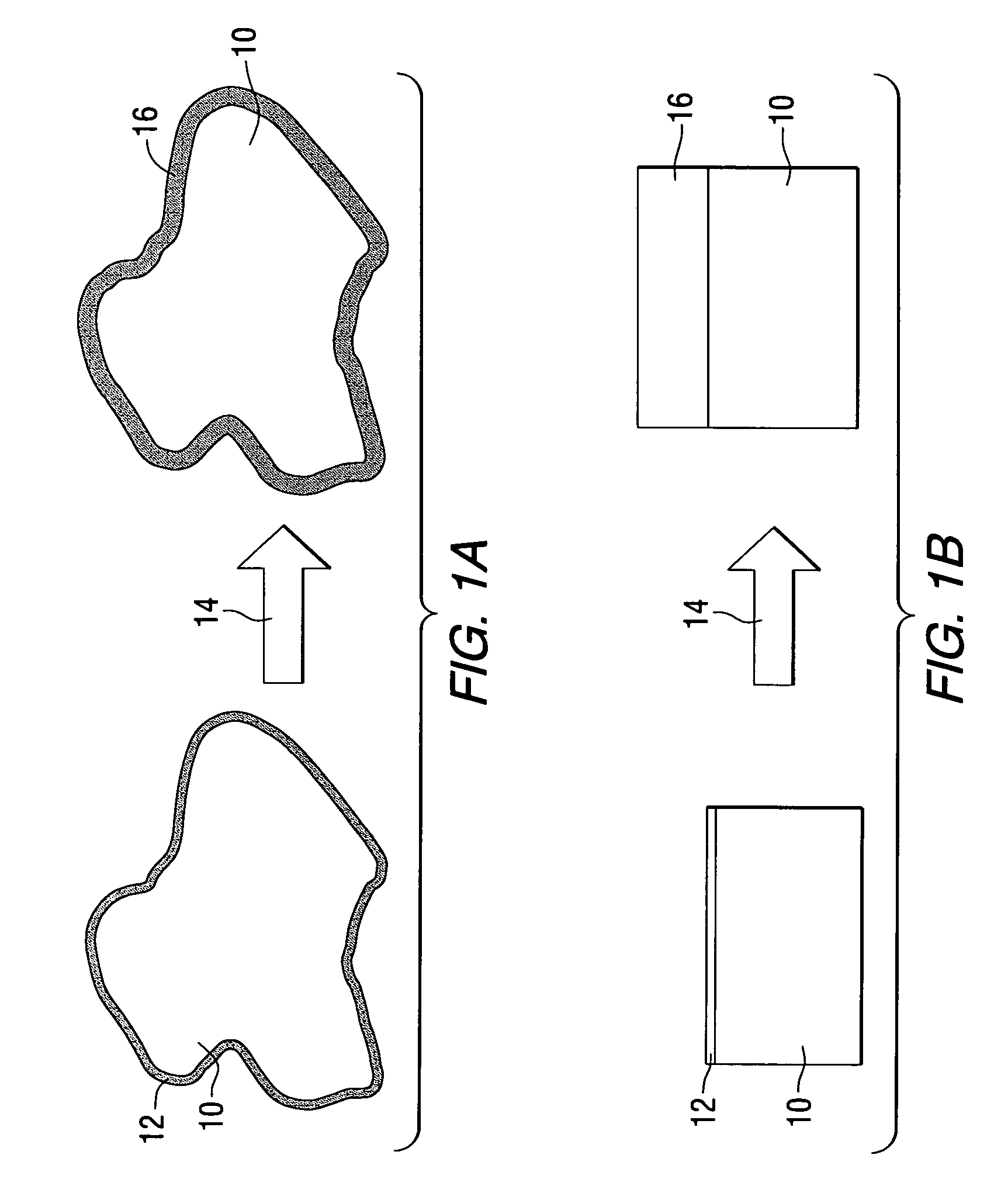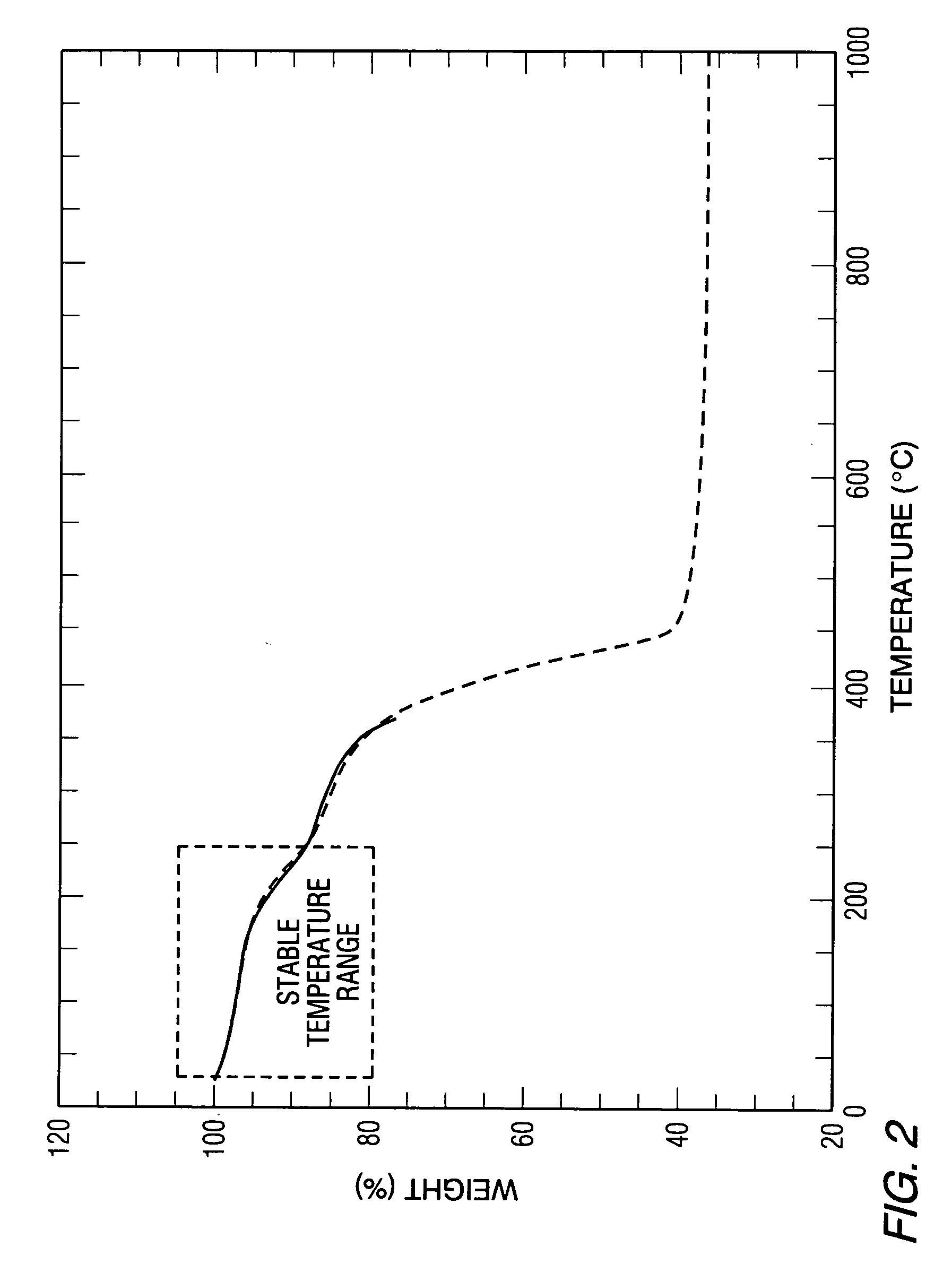Method for producing foamed aluminum products
a foaming aluminum and aluminum technology, applied in the field of foaming aluminum products, can solve the problems of high cost, insufficient structural integrity, and limited application of foamed metal products, and achieve the effects of reducing the cost of production, and increasing the cost of production
- Summary
- Abstract
- Description
- Claims
- Application Information
AI Technical Summary
Problems solved by technology
Method used
Image
Examples
example 2
[0079] A porous metal product having improved homogeneity of the metal phase and the ceramic phase was produced in accordance with the present invention as follows. A molten aluminum alloy was provided in which ceramic gassing agents and ceramic viscosity enhancing agents were added. The temperature of the molten aluminum alloy was held constant for a duration sufficient to promote gassing of the melt and the melt was subsequently cooled by rapidly decreasing the melt temperature to form a stable article having a multiplicity of pores.
PUM
| Property | Measurement | Unit |
|---|---|---|
| Fraction | aaaaa | aaaaa |
| Percent by mass | aaaaa | aaaaa |
| Percent by mass | aaaaa | aaaaa |
Abstract
Description
Claims
Application Information
 Login to View More
Login to View More - R&D
- Intellectual Property
- Life Sciences
- Materials
- Tech Scout
- Unparalleled Data Quality
- Higher Quality Content
- 60% Fewer Hallucinations
Browse by: Latest US Patents, China's latest patents, Technical Efficacy Thesaurus, Application Domain, Technology Topic, Popular Technical Reports.
© 2025 PatSnap. All rights reserved.Legal|Privacy policy|Modern Slavery Act Transparency Statement|Sitemap|About US| Contact US: help@patsnap.com



